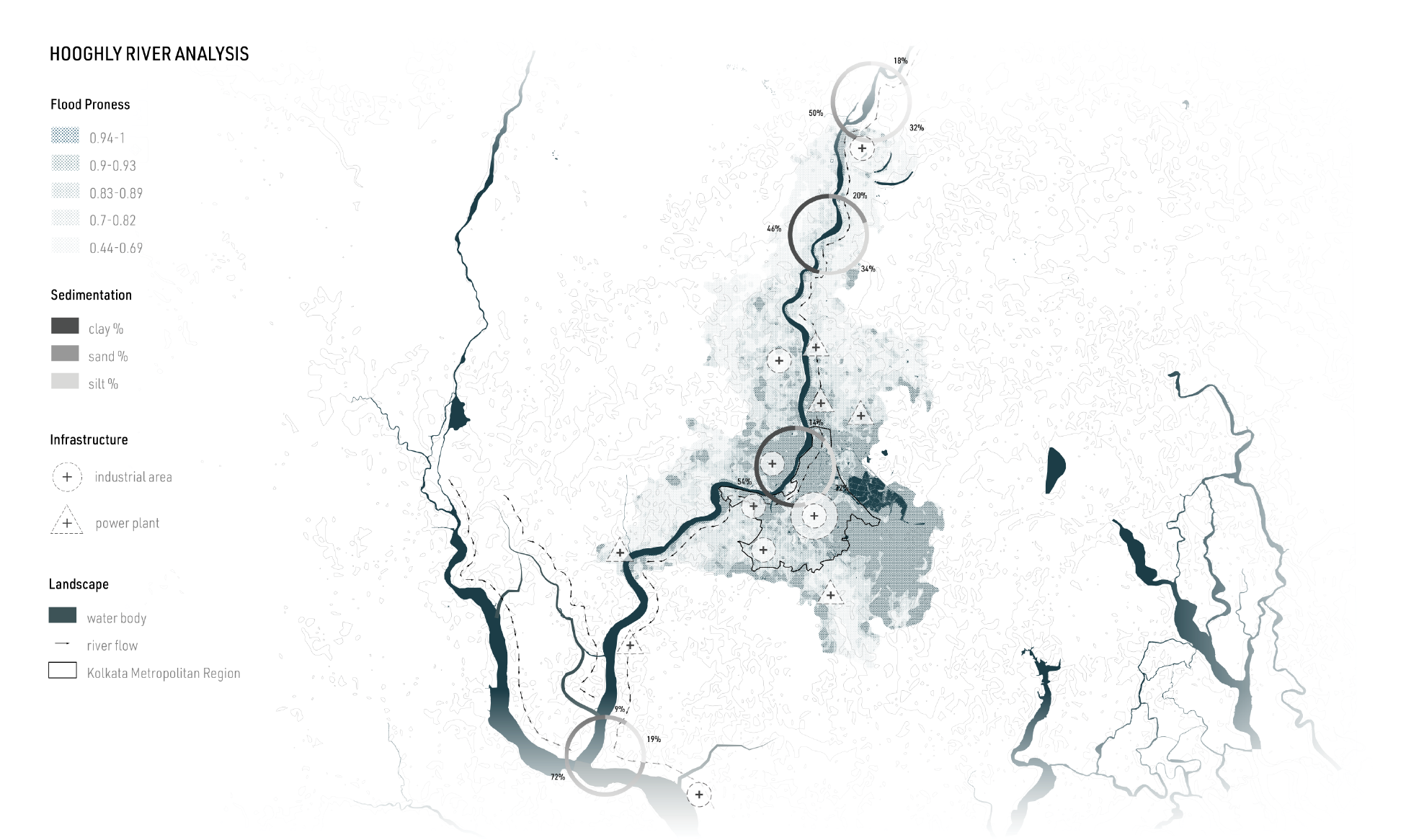
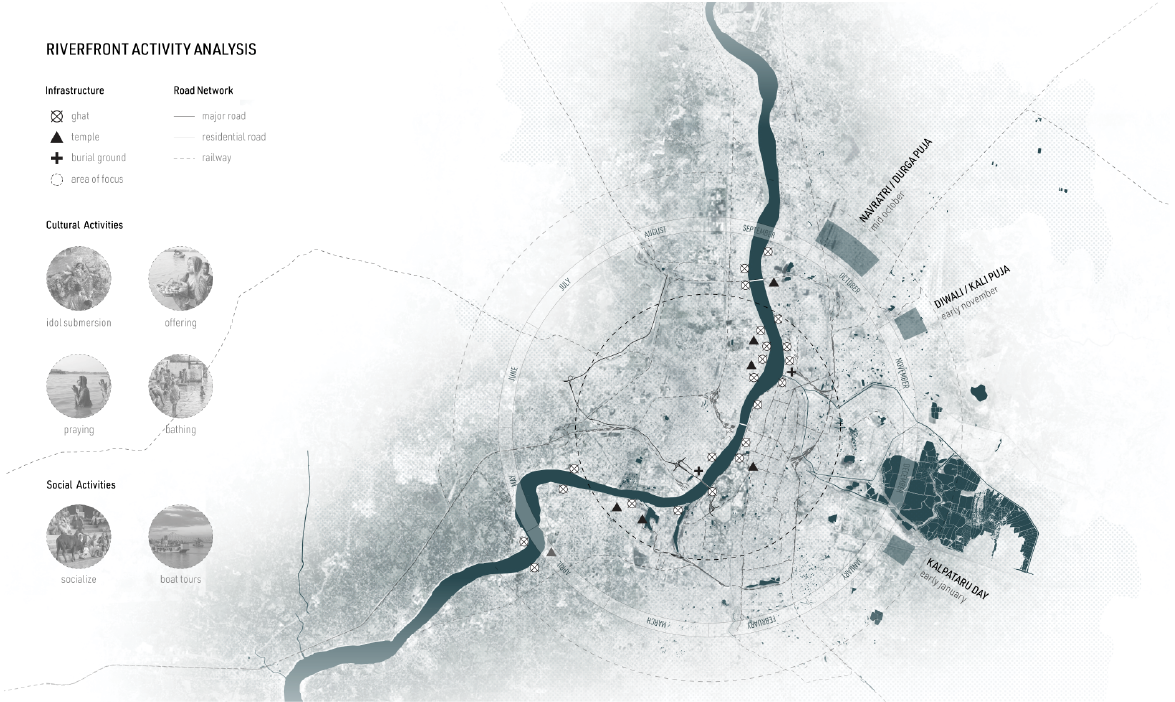
The Hooghly River is a main distributary of the Ganges and holds major religious significance for close to a billion people. However, it suffers from many problems, including flooding during the monsoon season and collecting waste material from industrial sites and sewer pipe outlets. Excessive pollution along the river is also the direct result of cultural and religious activities, including idol submersions, giving offerings, performing burial ceremonies, and bathing. Residents are brought into direct contact with the river especially during festival seasons where three major ones take place in October, November, and January. Some of these rituals pollute the river, which has become a major public health issue for Kolkata as they continue to create unsuitable conditions for people to be immersed in the water.
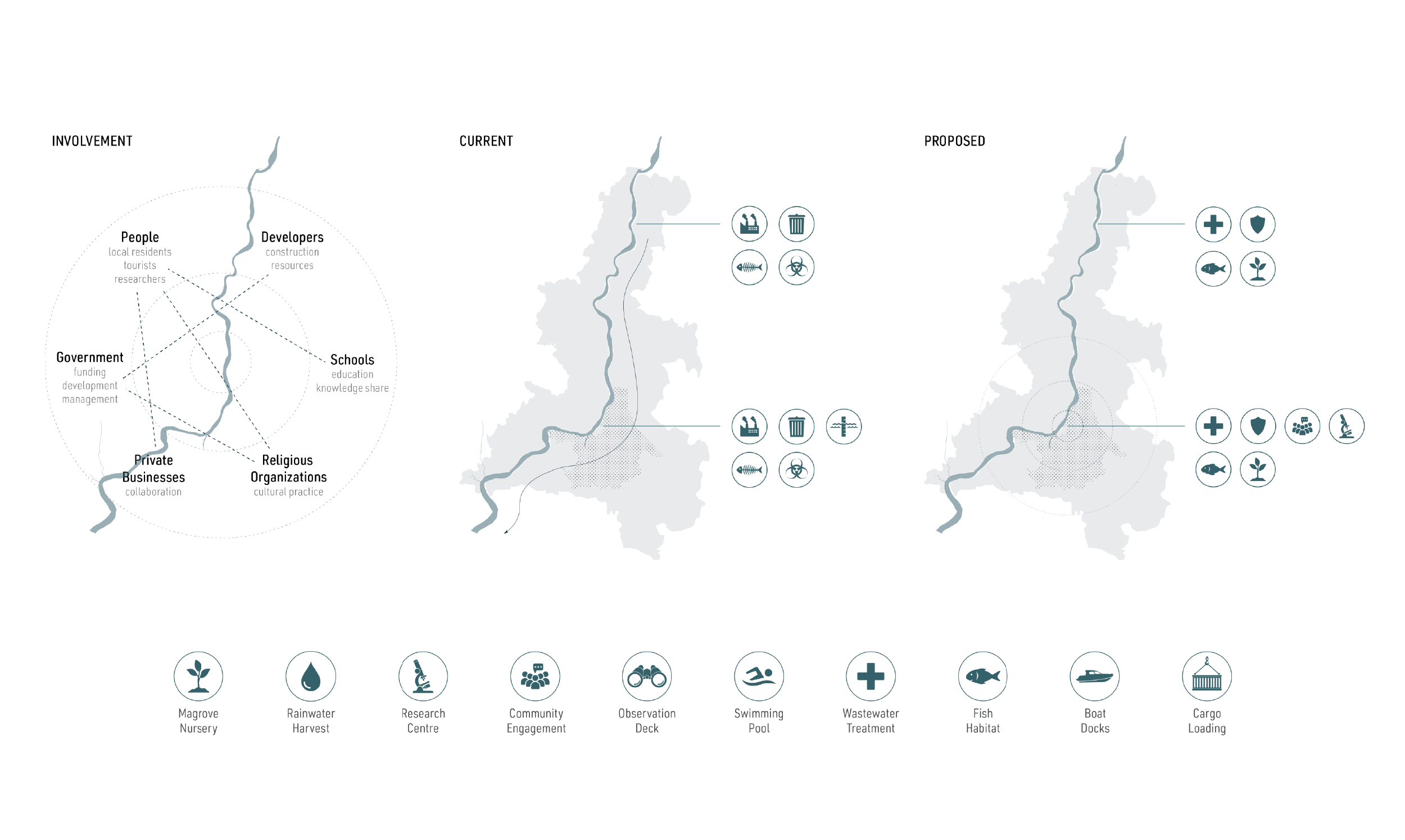
I am proposing an intervention for the river that will aim to tackle these issues by introducing a series of typologies that will work together to treat water pollution, mitigate sea-level rise, and revitalize the riverfront while also accommodating the social and cultural needs of Kolkata residents using biomimicry. With the mangrove forest of the Sundarbans located in the periphery of Kolkata, mangroves are used as a design model for my proposal. Mangroves are salt-tolerant trees and shrubs that help protect coastal regions from intense tropical storms, waves, and erosion. They serve as a flood barrier by absorbing the force of wind and waves, reducing the damage caused by cyclones and other storms. Furthermore, they reduce GHG emissions by capturing and storing waste carbon dioxide while their complex exposed root system nurtures aquatic organisms.
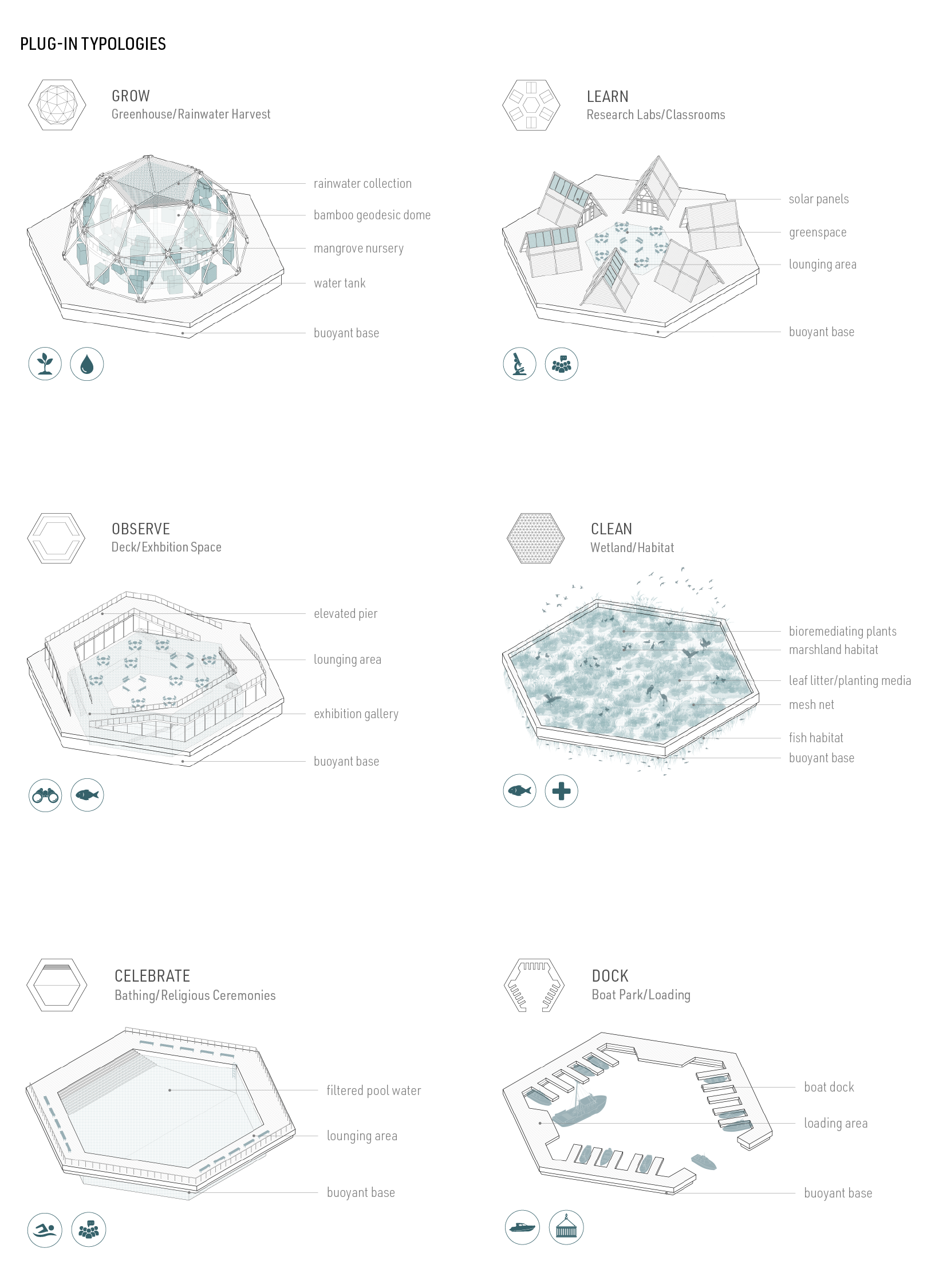

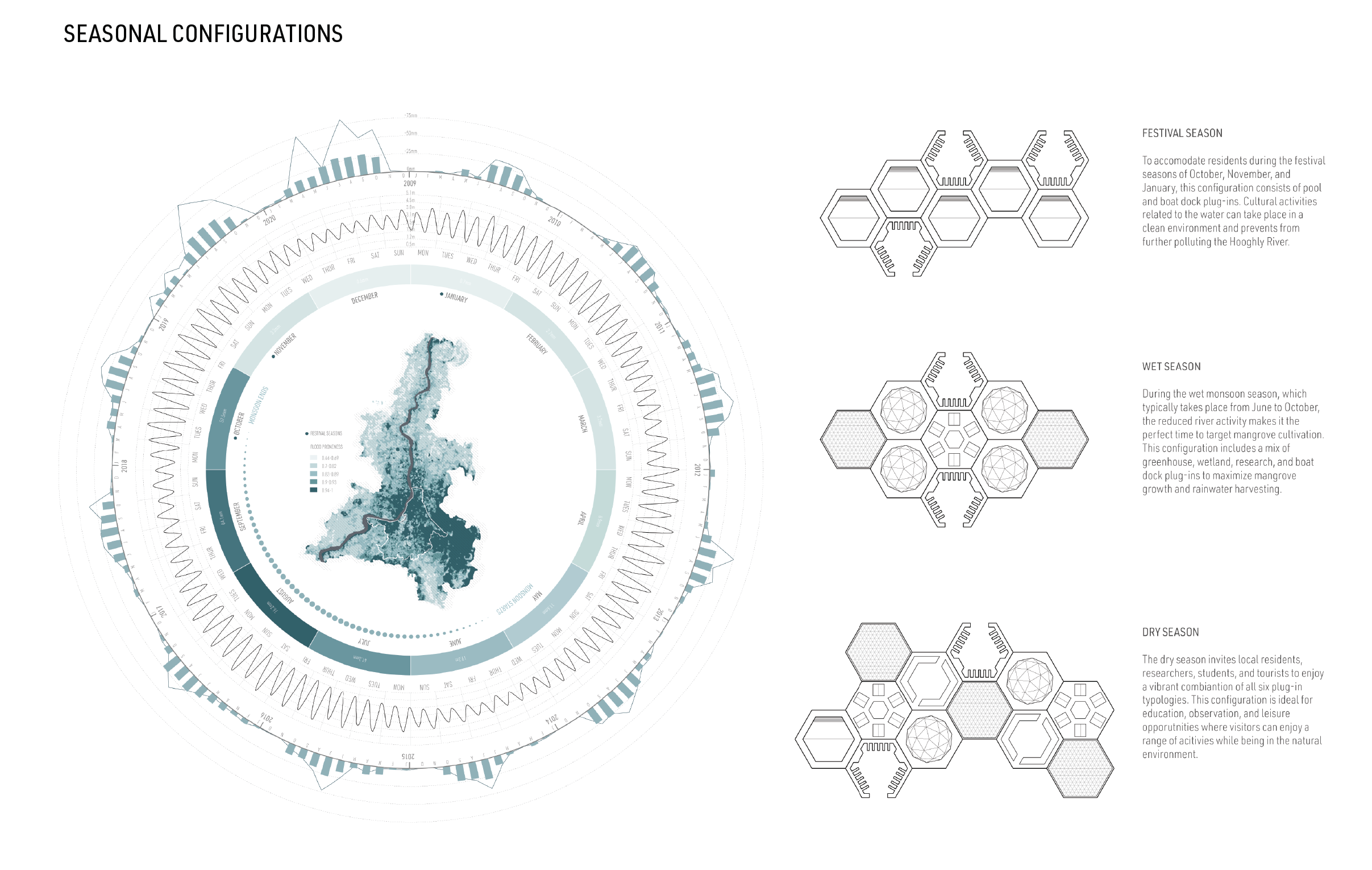
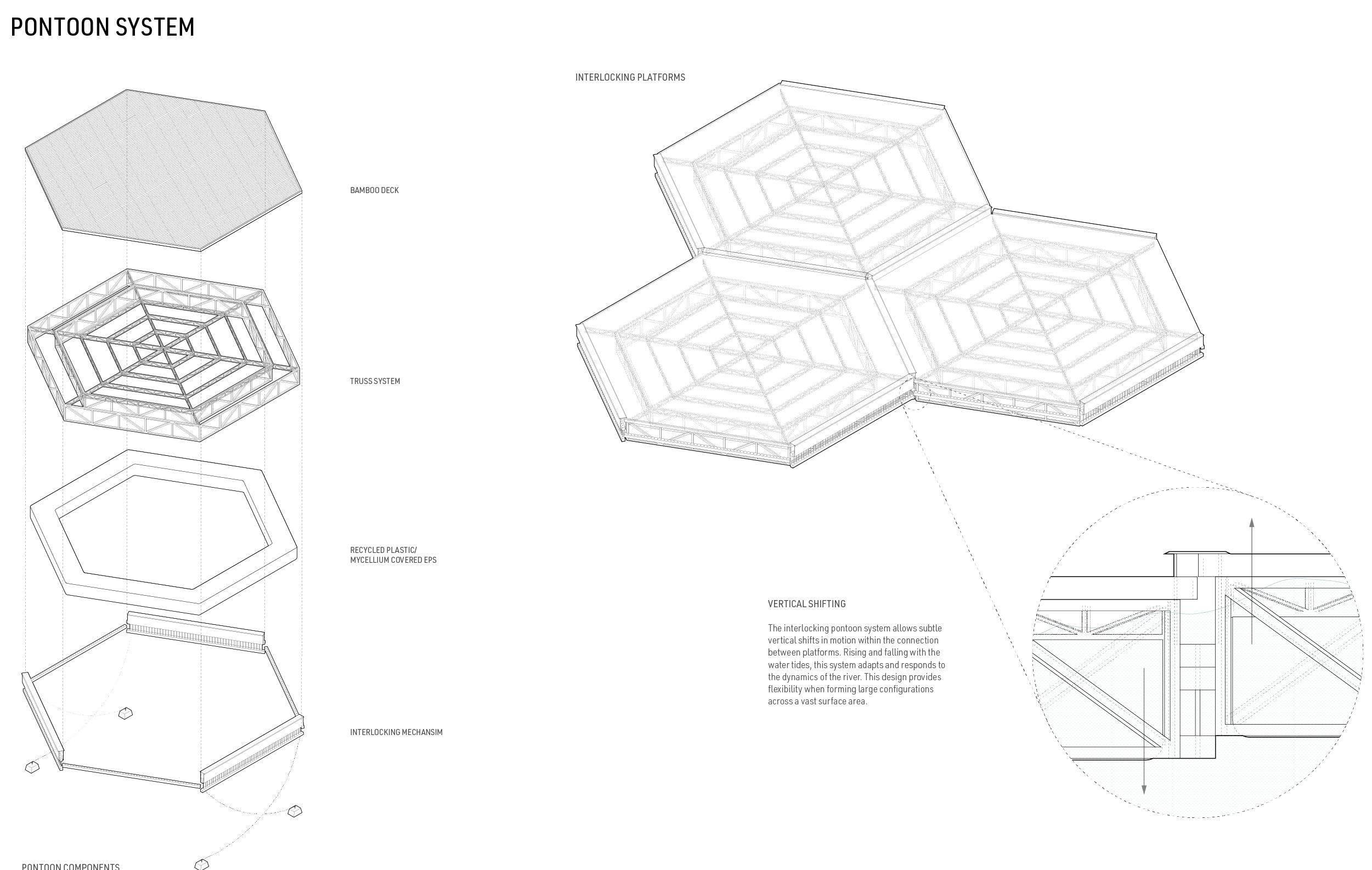
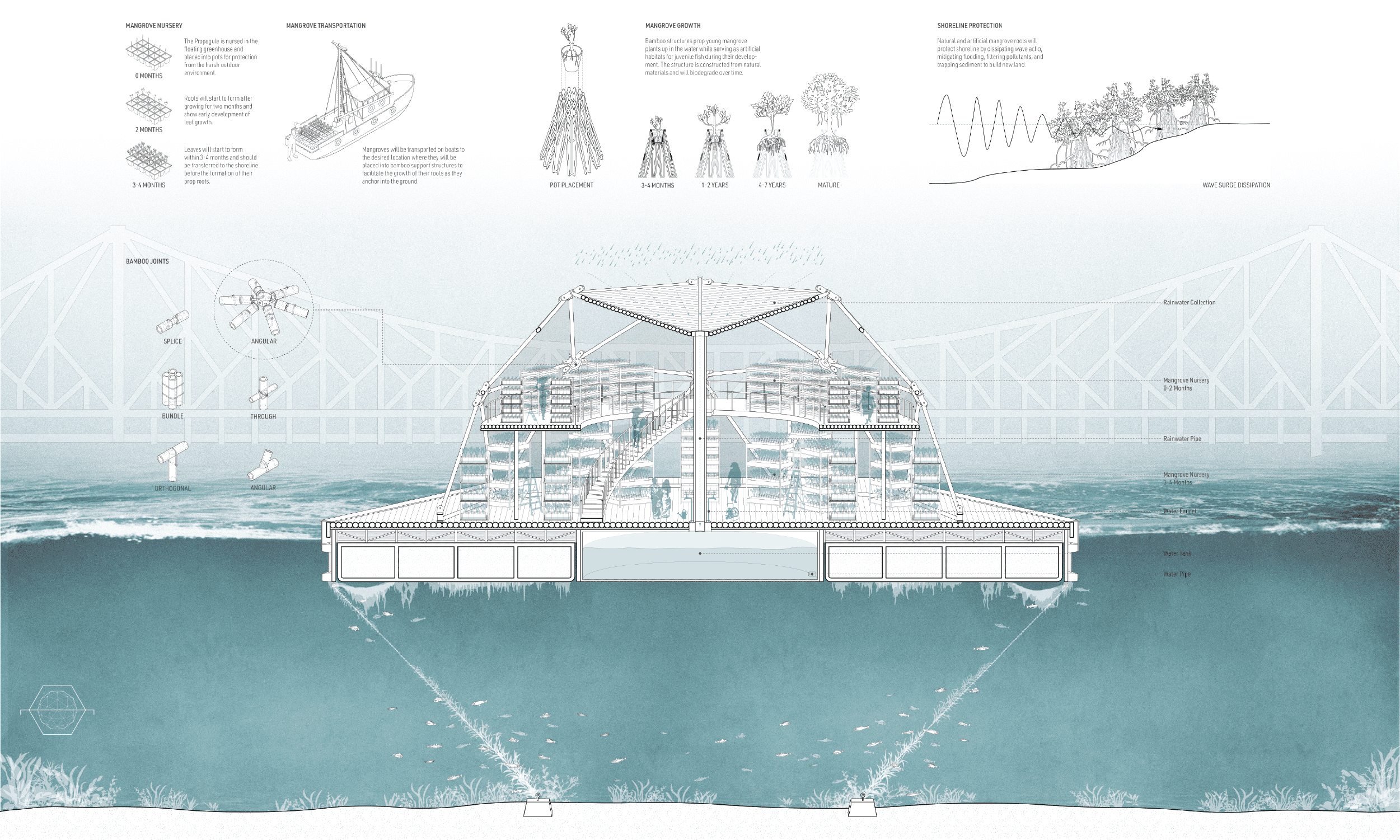

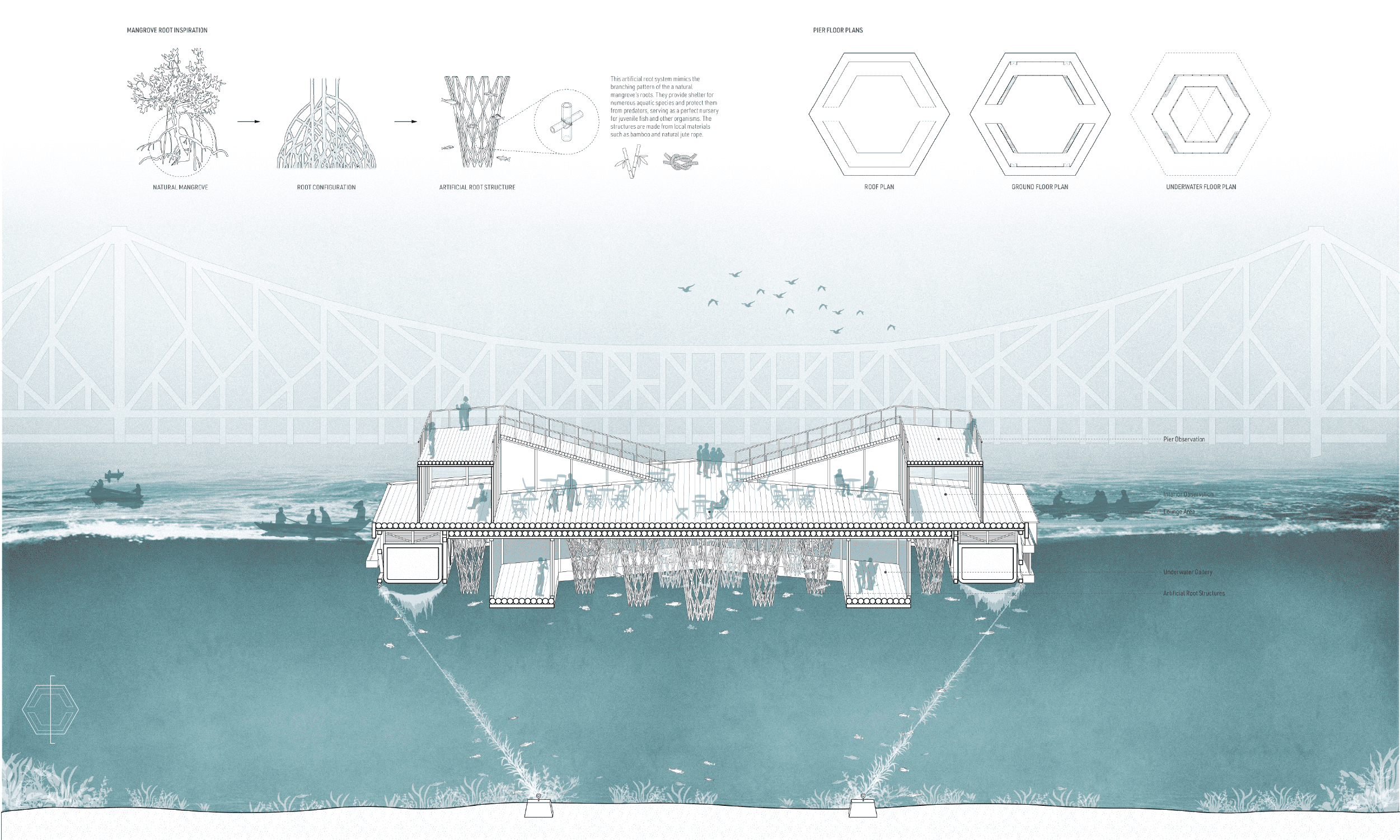
In response to the disconnection between humans and their landscapes caused by urbanization, this project utilizes architecture as a gradient between the two environments as it is designed in harmony with nature. By using mangroves as a design model, the river is reimagined, climate change can be naturally mitigated, and the symbiosis of architecture and nature is achieved. This floating community responds to current and future environmental threats of the city and aims to regenerate a socially and environmentally sustainable body of water while preserving the river’s cultural significance. By submerging the built infrastructure into the natural environment, architecture, water, and vegetation will constitute one whole element.


